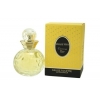|
 The
Christian Dior perfume story dates back the year 1947 when Christian Dior along
with his friend Serge Heftler Louiche created the legendary Miss dior perfume
when the New Look Collection was triumphing. The first sparrow of the Christian
Dior collection was taken as the base traditionally and within the following
decades Dior Fashion House launched six more fragrances called repeating the
brand name in various versions like Diorama, Diorissimo, Diorling, Diorella,
Dioressence and Dior Dior. The series of aromatic fragrances by Dior came to
its end in 1985 after the revolutionary Poison was unveiled. The
Christian Dior perfume story dates back the year 1947 when Christian Dior along
with his friend Serge Heftler Louiche created the legendary Miss dior perfume
when the New Look Collection was triumphing. The first sparrow of the Christian
Dior collection was taken as the base traditionally and within the following
decades Dior Fashion House launched six more fragrances called repeating the
brand name in various versions like Diorama, Diorissimo, Diorling, Diorella,
Dioressence and Dior Dior. The series of aromatic fragrances by Dior came to
its end in 1985 after the revolutionary Poison was unveiled.
In spite of
the common names for fragrances every single fragrance by Dior appeared to be
the triumph in the world of perfumery. Edmund Rudnitsa, the French perfumer,
created first fragrances for Dior being one of the talented perfumers of 50s
taught by the legendary Ernest Be, the author of the legendary Chanel №5.
Diorama fragrance
that was launched in 1949, two years after Miss Dior was presented, was called
the scent designed for Goddess but not a woman by the perfumery critic Luca
Turin. The fragrance was the first shipper scent demonstrated by the Dior House
and resembled Le Parfum De Therese, created by the same Edmund Rudnitsa for the
Frederic Malle House. Diorama was different for the complicated composition
presenting the sensitive and alluring notes of spicy pepper, carnation, cinnamon,
nutmeg and the animal accord of zibet and musk.
In 1956 the
Dior House offers the new Dior series fragrance called Diorissimo which again turned
the perfume world upside down. Rudnitsa built the fragrance on the notes of lily
of the valley, the flower being the talisman for Christian Dior and Diorissimo became
the first fragrance in the world with the top notes of lily of the valley.
Chasing the idea to get the scent of lily, the perfumer had to artificially
produce the flowery note since the lily essence was quite impossible to acquire
for that time. Creating Diorissimo, Edmund Rudnitsa refused to refer to the
standards of 50s based upon the sweet notes of gourmet. The perfumer stated
that he was not willing to put too many ingredients into the fragrance to get
the scent but not the gourmet dish with the heavy aroma. Thus, the Diorissimo perfume
composition is opened with the notes of bergamot, lily of the valley,
ylang-ylang, jasmine, sandal wood, zibet and the accord of the greenery.
Paul Vacher
created the Diorling fragrance presented in 1963 who participated in the
development of the very first aroma Miss Dior by the French brand. Diorling is the
unique scent with the intense but elegant scent of leather. The scent of
leather in Diorling is durable gradually softening with the gentle accord of
white flowers, oakmoss and patchouli.
Diorella is
the next fragrance created by Dior House again created by Edmund Rudnitsa being
the favorite scent of the legendary perfumer. Diorella was presented in 1972 to
be the unique version of women fragrance based upon the classic fragrance for
men launched in 1966, Eau Sauvage, and it was also as simple as possible since
Edmund was eager to present simple but elegant scents. The perfumer fond the Diorella
differing from the men’s Eau Sauvage, and he rather compared his new fragrance
with the Dior Eau Fraiche launched in 1952. The
Diorella composition is opened with the top notes of lemon, basil, bergamot,
melon, jasmine, rose, cyclamen, oakmoss, vetiver, musk and patchouli.
Gay Robert,
the perfumer who created such reputed fragrances as Hermеs Calеche and Rochas Madame Rochas, presented Dioressence
in 1979 for the Dior House. The perfumer was assigned to create the animalistic
scent which could correspond to the slogan «le parfum barbare», which stands
for barbarian perfume from French language. The perfume critics considered the
work by Robert as the ideal personification of the animalistic scent as the
luxury, sensitive, sharp, spicy and incredibly alluring.
The
fragrance Dior-Dior that ended the collection of Dior-scents turned to be the
shattering failure for the history of Dior perfume house. The sent was created
by the same perfumer working constantly for Dior, Edmund Rudnitsa, and it was
discontinued quickly failed to win the hearts of ladies. It is too difficult to
find out the reasons that brought to knock-down failure of the final scent of this
series, whether it is the wood-and-flower composition of the late 70s or the
global marketing that forced the perfume brands to pay more attention to the
bottles and promotion campaign of the new products.
|